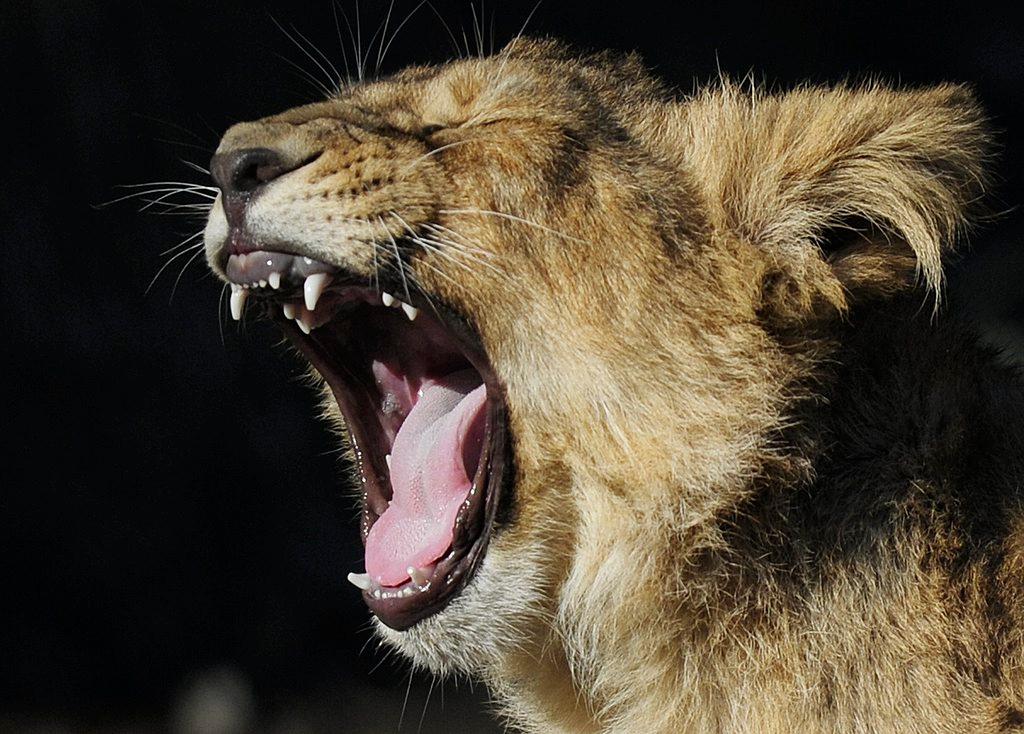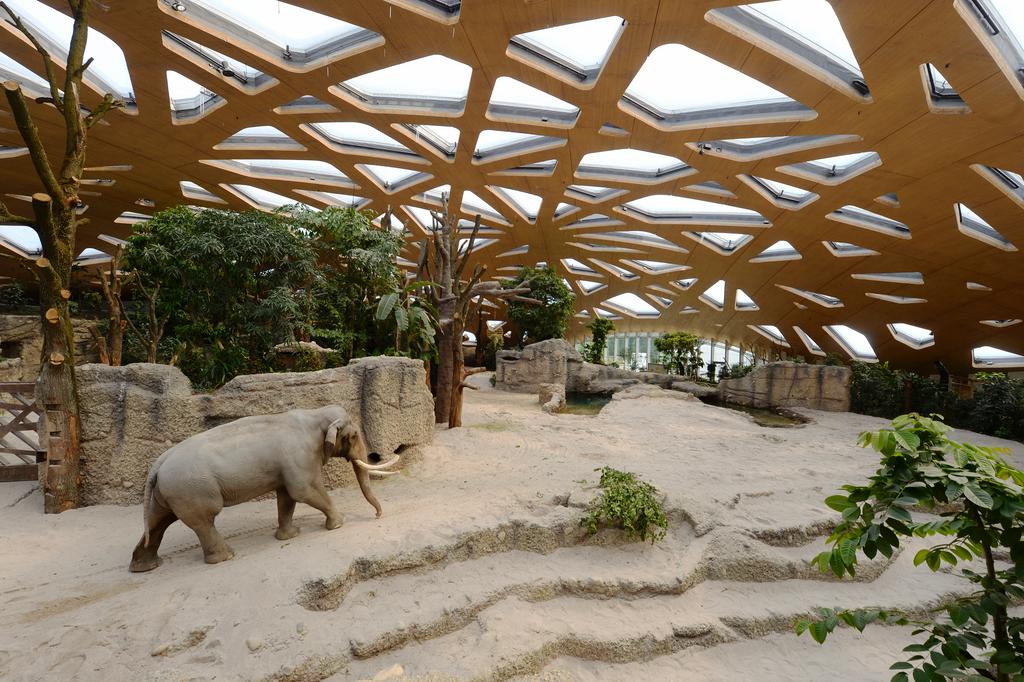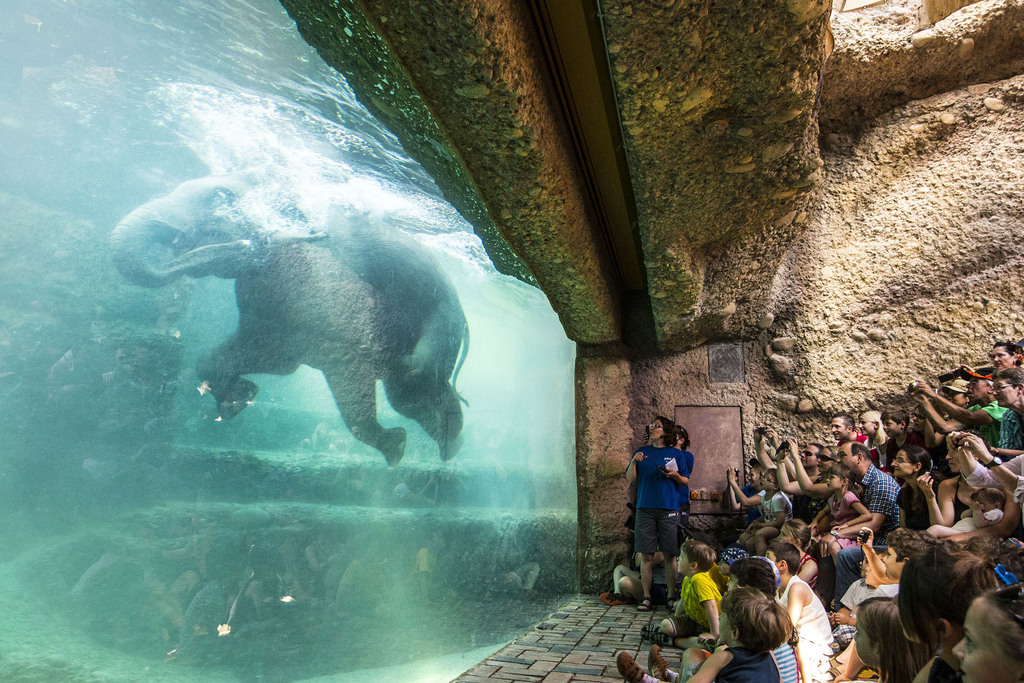Europe offers last line of defence for the Asiatic lion

The recent death of 23 Asiatic lions in India – including three from the highly contagious Canine Distemper Virus (CDV) – has highlighted the risk of confining the species to a small part of the country. In a worst-case scenario, can captive animals in European countries like Switzerland help re-establish the species?
It is lunch time and the suburban neighbourhood of Zurichberg reverberates with the guttural call of a male lion. A 20-minute tram ride from Zurich’s main station, Zoo ZurichExternal link is by far the biggest attraction here, especially during the school holidays. Visitors flock to the lion enclosure, drawn to the sounds of the king of the jungle.
The four lions – one male and three females – do not belong to the African savannah but to deciduous forests of Gujarat state in northwestern India. Just over 600 Asiatic lions (Panthera leo persica) in the Gir Protected Area and surrounding region are all that is left of the wild Asiatic lion. The species once ranged from Greece in the west to India in the east but is now confined to a corner of an Indian state. Despite several proposals to relocate a few animals to other parts of the country, including an order from the Supreme Court in 2013, Gujarat has refused to part with “its lions”. It is a decision that could prove costly for the species.
Within a span of two weeks in September, 23 lions died in the Gir forest. Canine Distemper Virus (CDV) was detected in five of 24 samples tested, which indicated at least three of the dead lions were infected. Further testing of 80 samples from 27 lions that were placed under observation at the nearby Sakkarbaug Zoo revealed that 21 animals had tested positive for CDV.
“This indicates active disease transmission among the Gir lions,” confirmed a statement from the Indian Council of Medical Research on October 9.
This could have a serious impact on the population if history repeats itself. In 1994, an outbreak of CDV in the Serengeti in Tanzania decimated a third of the lions there.
“When you only have a small population of Asiatic lions it would be a great risk to the survival of the species if a third were wiped out,” Robert Zingg of Zoo Zurich told swissinfo.ch.
According to him, the relatively large number of lions in a small area means the risk of spread is high as more interactions are likely.
Buffer population
Zingg is a strong advocate of creating a second population of Asiatic lions in India. The Zurich zoo had financially supported attempts to develop a second home for the lions in the Kuno wildlife sanctuary in central India. Funds sent by the zoo were used to create an inventory of plants and animals in the sanctuary. Six years on, Kuno still hasn’t received any lions despite being deemed a suitable habitat for the big cats.
“In a country with so many people, every place prepared for wildlife should be used. It is not easy to find large enough spaces to establish a certain number of lions,” says Zingg.
Apart from disease, Zingg is worried about the fact that many of the lions in Gujarat live near villages where people graze livestock. He is afraid that people will retaliate if lions kill many cattle or even attack people.
Zurich zoo was one of three zoos – along with London and Helsinki – lucky enough to obtain pure Asiatic lions in the 1990s from the Sakkarbaug Zoo in Gujarat. A pair named Bhagirath and Mena were a gift to commemorate the 700th anniversary of the founding of Switzerland. Along with the London and Helsinki zoos, Zurich’s launched a European breeding programme and two decades later, 43 European zoos have a total of almost 150 Asiatic lions.
“The programme was so successful that today, it is difficult to find places for the lions. So we do not breed any more at the moment,” says Zingg.
The females have a hormonal implant that prevents them from getting into oestrus. If called upon, the zoo is capable of resuming the breeding programme. But there is a slight hitch. The breeding female was born in 2003 and her age makes it uncertain she could have any cubs. The two younger females are the progeny of the current male, hence no breeding is possible. The zoo will have to exchange its females for another male to make it work. This is where cooperation with India is required.
“They can help us in ensuring the zoo populations in Europe are genetically healthy. This would mean that additional animals are sent from India to European zoos when necessary,” says Zingg.
The Indian authorities have said that they don’t have enough animals to send to Europe but suggested artificial insemination instead. According to Zingg, this method is difficult to implement successfully, and it is much easier to exchange animals.
Swiss lions in wild?
While it is the responsibility of zoos to have animals that are genetically sound, can they really offer the possibility of re-establishing a big cat species that has been lost in the wild?
“The zoo populations of lions and all big cats are relatively robust and serve as a backstop from extinction – but the priority must be in ensuring the wild populations like the Gir lions stay safe,” says Doug Cress, CEO of the World Association of Zoos and AquariumsExternal link (WAZA).
That said, Cress underlines the role of zoos in the successful re-establishment of species that almost went extinct in the wild like the California condor, Black-foot ferret, Corroboree frog and the Golden Lion tamarin. Captive animals have acquired greater importance when evaluating the overall chances of survival of a species.
“Any population of wild animals could be re-established through the captive populations cared for in zoos and aquariums, and that is one reason the IUCN Red List of Threatened SpeciesExternal link will now include captive populations when assessing the extinction threat levels for species,” says Cress.
Despite the sufficient numbers it is notoriously difficult to re-establish big cats from zoos into the wild. A ten-year old studyExternal link that examined over 45 attempts at re-establishing carnivores including cheetahs and tigers found that the success rate of projects using captive-born animals was a mere 13% compared to 31% from wild-caught animals.
The lions at the Zurich zoo have managed to kill birds like herons that entered their enclosure, but their hunting skills are not good enough to survive in the wild. Zingg estimates that it will take two generations to create animals that have these skills to transmit to their offspring – a process that would require sacrificing a lot of prey animals.
Depending on how India copes with CDV crisis, it might not come to that.
“It is important to be aware that when you are the only country with a species you have a great responsibility,” says Zingg.

In compliance with the JTI standards
More: SWI swissinfo.ch certified by the Journalism Trust Initiative













You can find an overview of ongoing debates with our journalists here . Please join us!
If you want to start a conversation about a topic raised in this article or want to report factual errors, email us at english@swissinfo.ch.